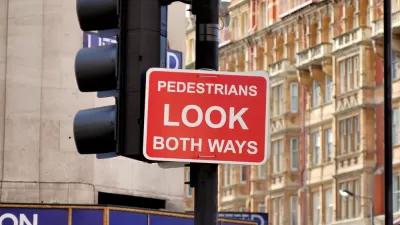Everyone seems to do it, in fact you may be doing it right now, but beware the injuries that await from distracted walking.

The data continues to pile up, giving evidence to what many have known for years: walking with your head down while looking at your phone isn’t the safest form of travel. Jane Brody reports in the New York Times' Well blog that a new survey from the American Academy of Orthopaedic Surgeons has found that this plethora of data may still not be sinking in with everyone.
…most people seem to think the problem involves other people. They’re not the ones who walk distracted. A new survey of some 6,000 people released last week by the American Academy of Orthopaedic Surgeons, found that while 74 percent said that “other people” were usually or always walking while distracted, only 29 percent said the same about themselves. And only 46 percent considered the behavior “dangerous.”
The number of nasty injuries, including head and neck injuries from trips, falls or being hit by cars caused by distracted walking, has doubled between 2004 and 2010. Brody reports that the best advice to avoid injury, as offered by experts, is to not look at your phone while walking. Other than that, a public service announcement called 'Digital Deadwalkers' is offering a number of basic suggestions to avoid injury, including a request that "if you find it necessary to make or take a call or send a text while walking, stop, step out of the flow of pedestrian and vehicular traffic, and resume walking only when the task is completed." Good advice.
FULL STORY: Distracted Walkers Pose Threat to Self and Others

Planetizen Federal Action Tracker
A weekly monitor of how Trump’s orders and actions are impacting planners and planning in America.

Maui's Vacation Rental Debate Turns Ugly
Verbal attacks, misinformation campaigns and fistfights plague a high-stakes debate to convert thousands of vacation rentals into long-term housing.

San Francisco Suspends Traffic Calming Amidst Record Deaths
Citing “a challenging fiscal landscape,” the city will cease the program on the heels of 42 traffic deaths, including 24 pedestrians.

Amtrak Rolls Out New Orleans to Alabama “Mardi Gras” Train
The new service will operate morning and evening departures between Mobile and New Orleans.

The Subversive Car-Free Guide to Trump's Great American Road Trip
Car-free ways to access Chicagoland’s best tourist attractions.

San Antonio and Austin are Fusing Into one Massive Megaregion
The region spanning the two central Texas cities is growing fast, posing challenges for local infrastructure and water supplies.
Urban Design for Planners 1: Software Tools
This six-course series explores essential urban design concepts using open source software and equips planners with the tools they need to participate fully in the urban design process.
Planning for Universal Design
Learn the tools for implementing Universal Design in planning regulations.
Heyer Gruel & Associates PA
JM Goldson LLC
Custer County Colorado
City of Camden Redevelopment Agency
City of Astoria
Transportation Research & Education Center (TREC) at Portland State University
Jefferson Parish Government
Camden Redevelopment Agency
City of Claremont





























